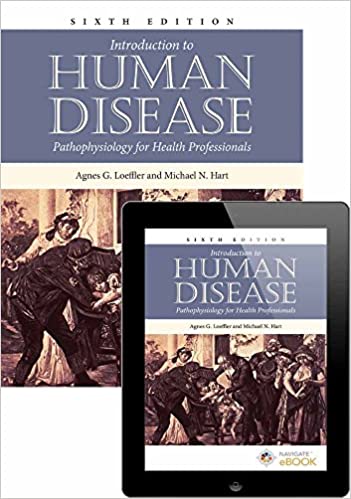
Introduction to Human Disease: Pathophysiology for Health Professionals 6th Edition by Agnes Loeffler,Michael Hart
Edition 6ISBN: 978-1284133196
Introduction to Human Disease: Pathophysiology for Health Professionals 6th Edition by Agnes Loeffler,Michael Hart
Edition 6ISBN: 978-1284133196 Exercise 2
Which of the following statements best characterizes the difference between restrictive and obstructive lung disease?
A) Restrictive lung disease is reversible, whereas obstructive lung disease is not.
B) Restrictive lung disease refers to restriction of the lungs' movement, whereas obstructive lung disease is caused by inability of the lung to inflate completely.
C) Restrictive lung disease is characterized by a decrease in peak flow as measured by spirometry, whereas obstructive lung disease is characterized by an increase in the total lung volume.
D) Restrictive lung disease is caused by destruction of the lungs' elastic property, whereas obstructive lung disease is caused by obstruction of the flow of air out of the air passages.
E) Restrictive lung disease is more commonly caused by smoking, whereas obstructive lung disease is more commonly caused by infection.
A) Restrictive lung disease is reversible, whereas obstructive lung disease is not.
B) Restrictive lung disease refers to restriction of the lungs' movement, whereas obstructive lung disease is caused by inability of the lung to inflate completely.
C) Restrictive lung disease is characterized by a decrease in peak flow as measured by spirometry, whereas obstructive lung disease is characterized by an increase in the total lung volume.
D) Restrictive lung disease is caused by destruction of the lungs' elastic property, whereas obstructive lung disease is caused by obstruction of the flow of air out of the air passages.
E) Restrictive lung disease is more commonly caused by smoking, whereas obstructive lung disease is more commonly caused by infection.
Explanation
Pulmonary functions test are required to...
Introduction to Human Disease: Pathophysiology for Health Professionals 6th Edition by Agnes Loeffler,Michael Hart
Why don’t you like this exercise?
Other Minimum 8 character and maximum 255 character
Character 255


